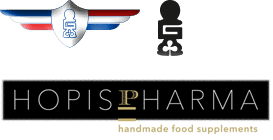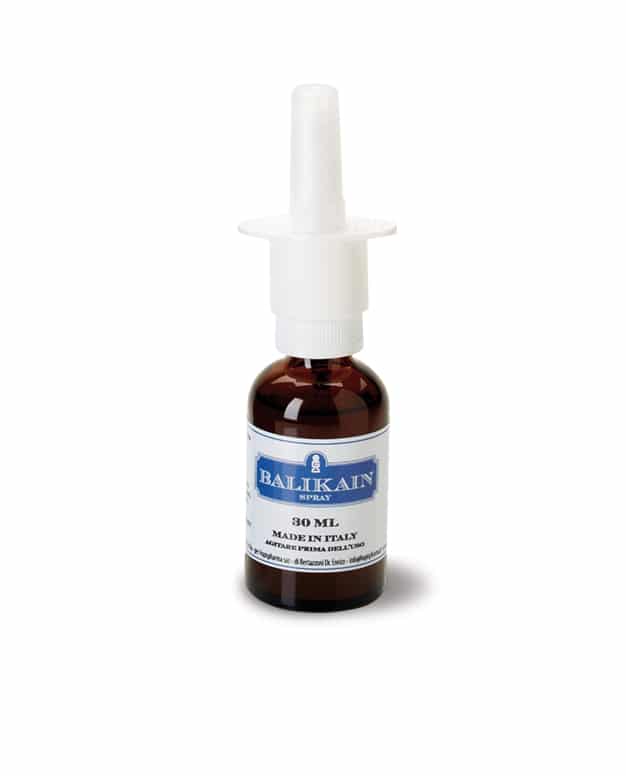Description
SCUTELLARIA BAICALENSIS-SIBERIAN GINSENG
The nasal mucosa is the predominant point of contact between the respiratory system and the external environment. Its function is to prepare the inspired air by acting not only as a low-resistance primary conduit for the air to reach the lungs, but also to humidify, clean and warm it. Precisely because of its characteristics, it is constantly exposed to aero-allergens, chemicals, pollutants, viruses and bacteria, causing inflammation that manifests itself as congestion or simple discomfort but also as allergic rhinitis or chronic sinusitis. Furthermore, its particular architecture forces the air to pass through vortices which cause the coarser impurities to precipitate.
Let’s think about how our sleep is compromised when the nose is even simply half closed with repercussions that we carry with us throughout the day. The most popular remedy for most patients in nasal obstruction is the use of nasal sprays or decongestants that work through alpha-adrenergic effects; unfortunately, these are associated with rebound congestion, leading to repeated use and subsequent “rhinitis medicamentosa”. Consequently and in the light of these premises, we thought of a product based on other mechanisms, which did not give the rebound effects associated with the use of decongestants.
Consequently, our interest was focused on creating a synergy of plants with a positive and complex interaction of various herbs and we created BALIKAIN SPRAY. This combination of, Scutellaria baicalensis and Eleuthrococcus Senticosus (Siberian ginseng ) traditionally used in China for the treatment of inflammation, with low toxicity demonstrated a significant suppression of nasal inflammation mediators acting favorably on congestion.
INGREDIENTS
• AQUA
• SEL MARINUM
• SCUTELLARIA BAICALENSIS EXTRACT tit. 98 % in baicaleina*
• ELEUTEROCCOCCUS SENTHICOSUS EXTRAC*
• SODIUM HYALURONATE
• PHENOXYETHANOL
• SODIUM BENZOATE
• ASCORBIC ACID
• POLISORBATUM 20
HOW TO USE THE PRODUCT
. Dispense 3-4 time during the day. Validity 6 months after opening.
FORMATO
30ml
Glass jar with dispenser/nebulizer cap.
the indications according to traditional Chinese medicine do not in any way want to replace western medicine and medical advice.
BIBLIOGRAFIA
A Herbal Composition of Scutellaria baicalensis and Eleutherococcus senticosus Shows Potent Anti-Inflammatory Effects in an Ex Vivo HumanMucosal TissueModel , Nan Zhang,Koen Van Crombruggen,Gabriele Holtappels, and Claus Bachert1, Department of Oto-Rhino-Laryngology, Upper Airway Research Laboratory (URL), Ghent University Hospital, De Pintelaan 185, 9000 Ghent, Belgium Department of Oto-Rhino-Laryngology, Zhongshan City Peoples’s Hospital, Zhongshan 528403, China,
Hastan, W. J. Fokkens, C. Bachert et al., “Chronic rhinosinusitis in Europe—an underestimated disease. A GA2LEN in study,” Allergy, vol. 66, no. 9, pp. 1216–1223, 2011.
Bousquet, N. Khaltaev, A. A. Cruz et al., “Allergic rhinitis and its impact on asthma (ARIA) 2008 update (in collaboration with the World Health Organization, GA(2)LEN and AllerGen),” Allergy, vol. 63, supplement 86, pp. 8–160, 2008.
J. Fokkens, V. Lund, and J. Mullol, “European position paper on rhinosinusitis and nasal polyps,” Rhinology, vol. 45, no. 20, pp. 1–136, 2007.
M. Li and L. Brown, “Efficacy and mechanisms of action of traditional Chinese medicines for treating asthma and allergy,” Journal of Allergy and Clinical Immunology, vol. 123, no. 2, pp. 297–306, 2009.
Patou, T. Van Zele, P. Gevaert, G.Holtappels, P. van Cauwenberge, and C. Bachert, “Staphylococcus aureus enterotoxin B, protein A, and lipoteichoic acid stimulations in nasal polyps,” Journal of Allergy and Clinical Immunology, vol. 121, no. 1, pp. 110–115, 2008.
Geurkink N. Nasal anatomy, physiology, and function. J Allergy Clin Immunol. 1983;72:123 –8.
Bachert C. Clinical aspects of environmental illnesses of the nose and paranasal sinuses –science and clinical practice. Eur Arch Otorhinolaryngol Suppl. 1996;1:73 –153.
Unal M, Görür K, Ozcan C. Ringer-lactate solution versus isotonic saline solution on mucociliary function after nasal septal surgery. J Laryngol Otol. 2001;115:796 –7.
Naclerio RM, Bachert C, Baraniuk JN. Pathophysiology of nasal congestion. Int J Gen Med. 2010;3:47 –57. 5. Osborn JL, Sacks R. Chapter 2: nasal obstruction. Am J Rhinol Allergy. 2013; 27(Suppl 1):S7 –8.
Bachert C, Van Cauwenberge P, Olbrecht J, Van Schoor J. Prevalence, classification and perception of allergic and nonallergic rhinitis in Belgium. Allergy. 2006;61:693 –8.
Hastan D, Fokkens WJ, Bachert C, et al. Chronic rhinosinusitis in Europe-an underestimated disease. A GA2LEN in study. Allergy. 2011;66:1216 –23.
Ramey JT, Bailen E, Lockey RF. Rhinitis medicamentosa. J Investig Allergol Clin Immunol. 2006;16:148 –55.
Scadding GK. Rhinitis medicamentosa. Clin Exp Allergy. 1995;25:391 –4.
Li XM, Brown L. Efficacy and mechanisms of action of traditional Chinese medicines for treating asthma and allergy. J Allergy Clin Immunol. 2009;123: 297 –306.
Eisenberg DM, Kessler RC, Foster C, Norlock FE, Calkins DR, Delbanco TL. Unconventional medicine in the United States. Prevalence, costs, and patterns of use. NEJM. 1993;328:246 –52.
Jung SM, Schumacher HR, Kim H, Kim M, Lee SH, Pessler F. Reduction of urate crystal-induced inflammation by root extracts from traditional oriental medicinal plants: elevation of prostaglandin D2 levels. Arthritis Res Ther. 2007;9:R64.
Huang CH, Kimura R, Bawarshi-Nassar R, Hussain A. Mechanism of nasal absorption of drugs. II: absorption of L-tyrosine and the effect of structuralmodification on its absorption. J Pharm Sci. 1985;74:1298 –301.
Gulla J, Singer AJ, Gaspari R. Herbal use in ED patients. Acad Emerg Med. 2001;8:450.
Eisenberg DM, Kessler RC, Foster C, Norlock FE, Calkins DR, Delbanco TL. Unconventional medicine in the United States. Prevalence, costs, and patterns of use. N Engl J Med. 1993;328:246 –52.
Ueda S, Nakamura H, Masutani H, Sasada T, Takabayashi A, Yamaoka Y, Yodoi J. Baicalin induces apoptosis via mitochondrial pathway as prooxidant. Mol Immunol. 2002;38:781 –91.
Zhang N, Van Crombruggen K, Holtappels G, Bachert C. A herbal composition of Scutellariabaicalensis and Eleutherococcussenticosus shows potent anti-inflammatory effects in an ex vivo human mucosal tissue model. Evid Based Complement Alternat Med. 2012;2012:673145.
Bousquet J, Khaltaev N, Cruz AA, et al. Allergy. 2008;63(Suppl 86):8 –160.
Stull DE, Meltzer EO, Krouse JH, Roberts L, Kim S, Frank L, Naclerio R, Lund V, Long A. The congestion quantifier five-item test for nasal congestion: refinement of the congestion quantifier seven-item test. Am J Rhinol Allergy. 2010;24:34 –8.
Doty RL, Marcus A, Lee WW. Development of the 12-item Cross-Cultural Smell Identification Test (CC-SIT). Laryngoscope. 1996;106:353 –6.







